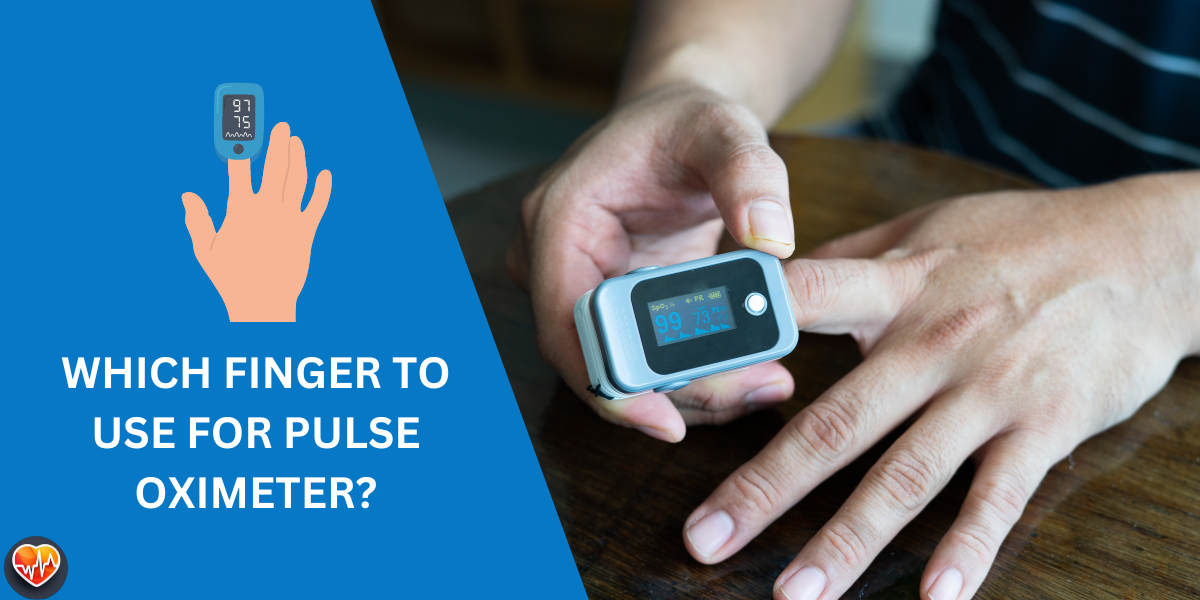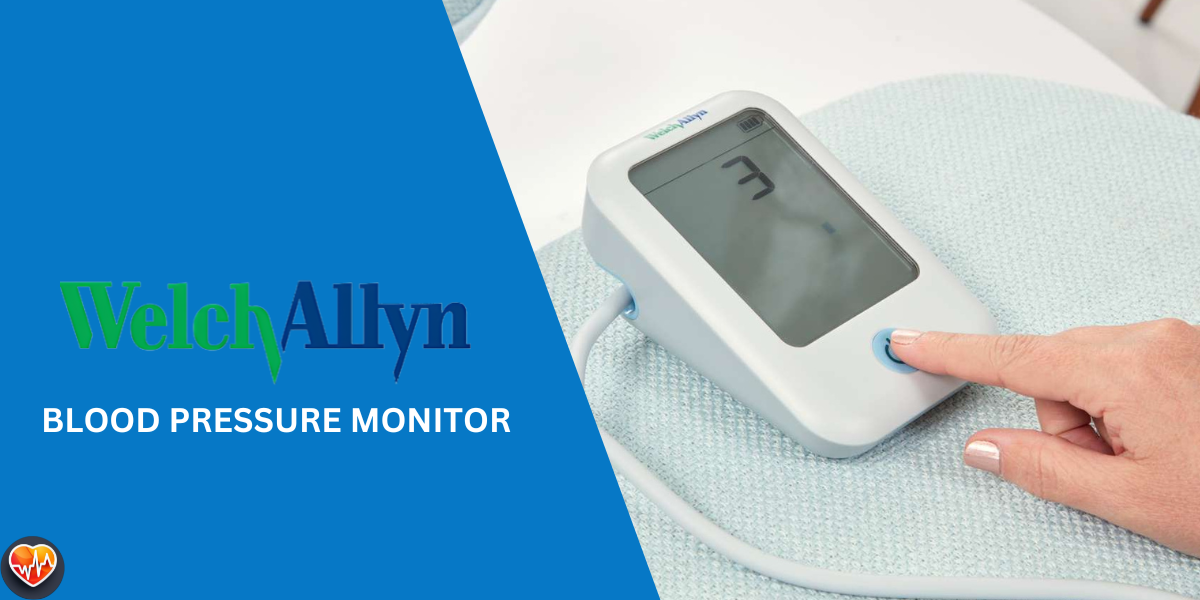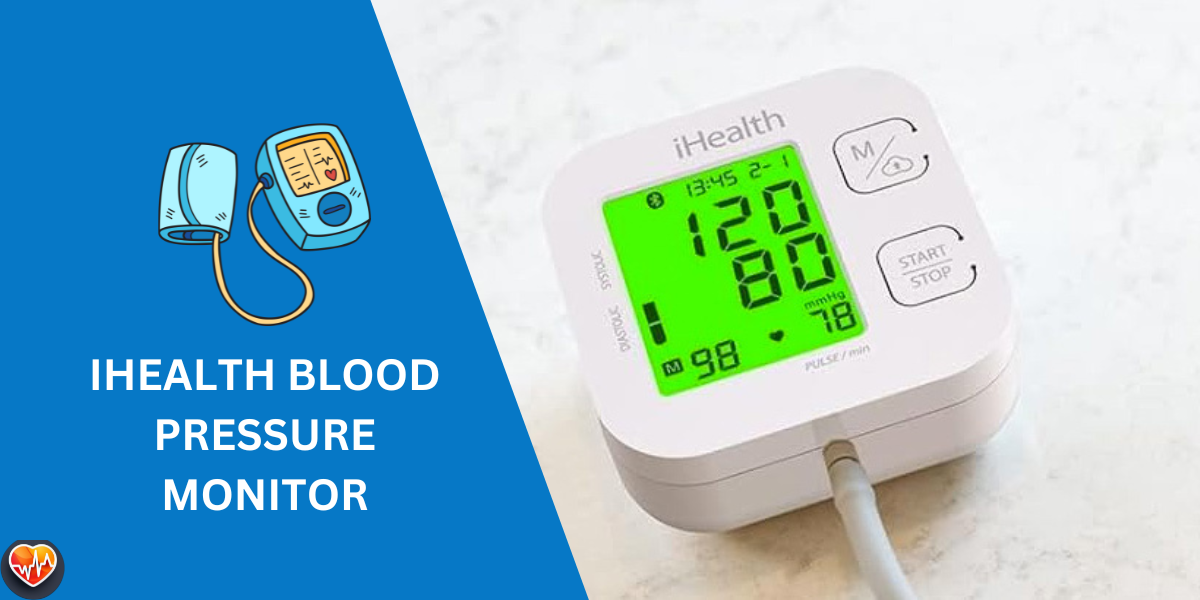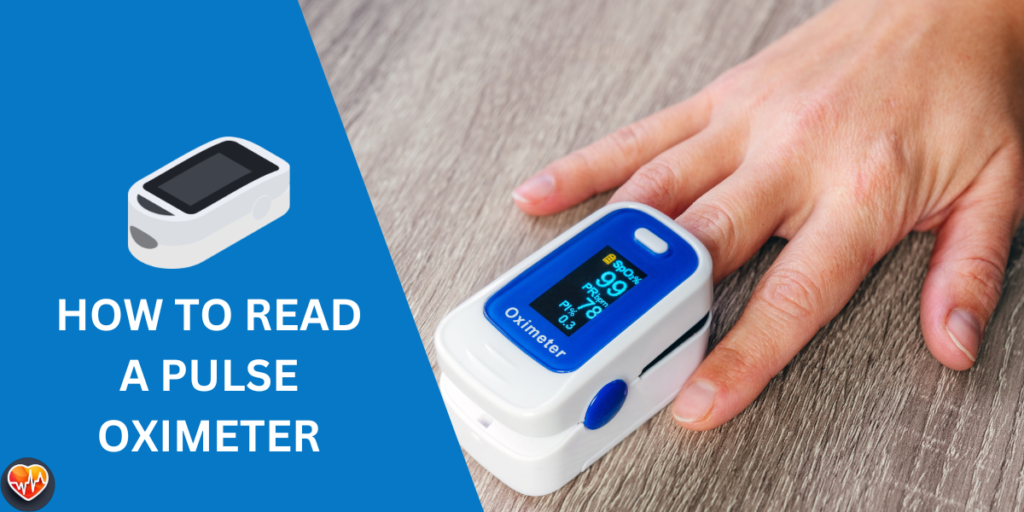
Have you ever felt a little short of breath? It might be a sign that your blood doesn’t have enough oxygen. That’s important because your body needs oxygen to work properly.
A pulse oximeter is a simple tool that measures the amount of oxygen in your blood.
It’s a quick and easy test that can give you helpful information about your health.
How to Read a Pulse Oximeter
- Warm your hands: Ensure your hands are warm for accurate readings.
- Rest before measuring: Relax for at least five minutes before using the device.
- Place on fingertip: Attach the oximeter to your index or middle finger.
- Keep still: Remain still for at least a minute while taking the reading.
- Record the numbers: Note the two numbers displayed – oxygen saturation level and heart rate.
- Store safely: Remove the device and store it in a safe place.
- Normal range: Healthy oxygen levels are typically between 95-100%.
- Low readings: If the readings are below 90%, seek medical advice.
What is a Pulse Oximeter?
Okay, so what exactly is a pulse oximeter? It’s a small device, usually clipped onto your fingertip, that shines a light through your skin.
This light measures how much oxygen is in your blood. You might have seen one at the doctor’s office, but they’re also available for home use.
The pulse oximeter gives you two important numbers:
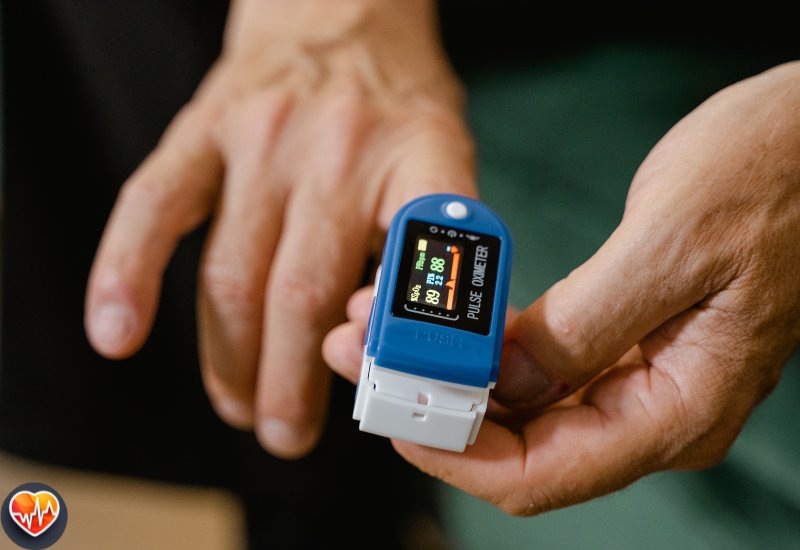
- Oxygen saturation: This tells you the percentage of oxygen in your red blood cells. Think of it like filling a glass with water. If the glass is full, you have 100% oxygen saturation.
- Pulse rate: This is simply your heart rate, or how many times your heart beats per minute.
Pulse oximeters are super handy because they give you a quick snapshot of how well your body is getting the oxygen it needs. They can be especially helpful for people with certain health conditions, like asthma or heart problems.
Why Should You Use a Pulse Oximeter?
Alright, so why should we even bother with this little gadget? Well, knowing your blood oxygen saturation level can be a real lifesaver! Here’s why:
- Spotting trouble early: If your blood oxygen level is too low, it could be a sign of a bigger problem, like a lung infection or even heart disease. A pulse oximeter can help you catch these issues early on when they’re easier to treat.
- Keeping tabs on your health: If you have a condition like asthma or COPD, a pulse oximeter could help you keep track of your oxygen levels and see how well your treatment is working. It’s like having your own personal health detective!
- Staying safe during exercise: If you’re a fitness buff, a pulse oximeter can help you see how your body handles exercise. If your oxygen levels drop too low, it might be time to slow down.
- Guiding treatment: If you’re using supplemental oxygen, a pulse oximeter can help your doctor figure out the right amount for you. It’s like finding the perfect temperature for your bathwater – not too hot, not too cold, just right!
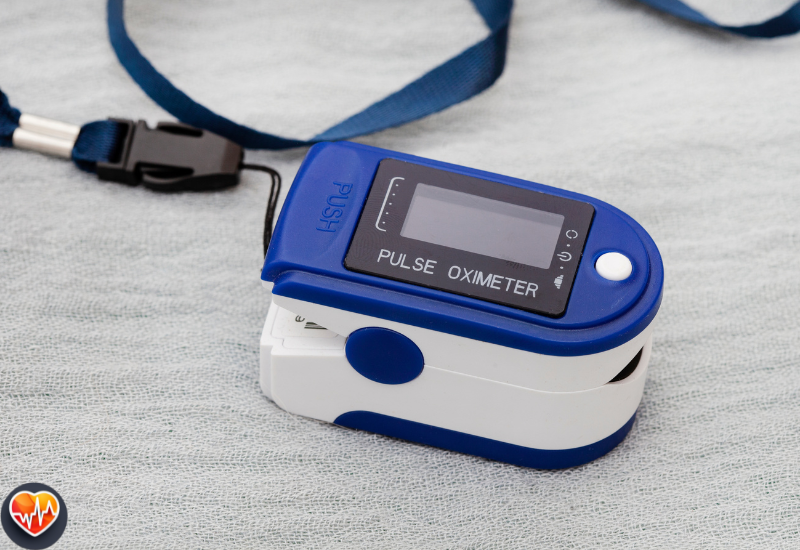
Let’s not forget that low oxygen levels can sometimes cause shortness of breath, dizziness, or confusion. If you notice any of these symptoms, a pulse oximeter reading can give you valuable information to share with your doctor.
How to Read a Pulse Oximeter
Now that we know why we need it, let’s dive into how to actually use a pulse oximeter. It’s really easy, I promise!
- Get ready: Make sure your hands are warm and relaxed. If they’re cold, it might be harder to get a good pulse oximetry measurement. Take off any nail polish or lookalike fake nails, as they can interfere with the light sensor.
- Clip it on: Most pulse oximeters are designed for your fingertip, but some can be used on your earlobe or toe. Just clip the device on and make sure it’s snug, but not too tight.
- Wait a bit: The oximeter needs a few seconds to get a good reading. You’ll see numbers flashing on the screen – that’s your oxygen saturation and pulse rate.
- Read the results: Once the numbers stop flashing, you’ve got your readings! Remember, oxygen saturation is a percentage (ideally 95% or higher), and pulse rate is beats per minute (usually between 60 and 100).
Keep in mind that pulse oximeters aren’t perfect. Sometimes, things like movement or poor circulation can strike the accuracy of the pulse oximeter reading.
If you’re unsure about your pulse oximeter readings, talk to your doctor.
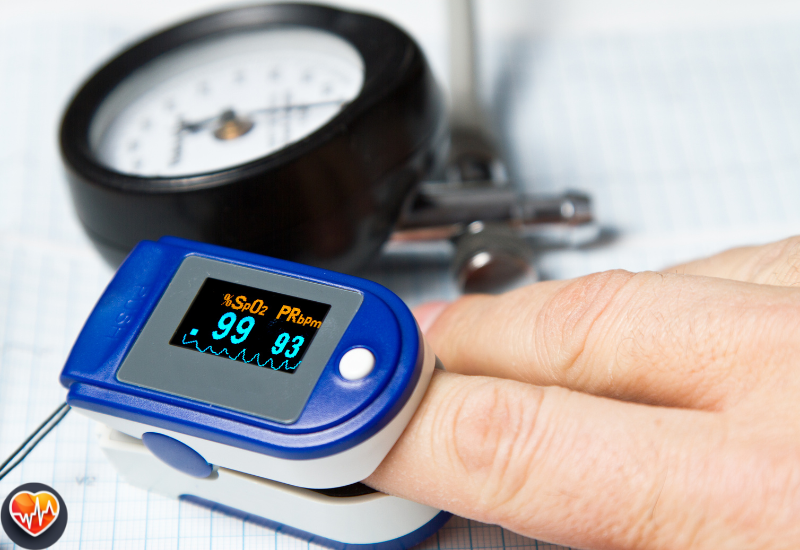
They might suggest another way to measure your blood oxygen levels, like an arterial blood gas test, which takes a small sample of arterial blood from an artery.
Interpreting Your Pulse Oximeter Readings
Now that you’ve got your pulse oximeter readings, what do they mean? Let’s break it down.
Oxygen Saturation Levels
A normal pulse oximeter reading for oxygen saturation levels is usually 95% or higher. If your oxygen saturation level is lower, it doesn’t necessarily mean you have a serious problem, but it’s worth talking to your doctor.
Here’s a quick guide:
- 95% or higher: This is considered a normal pulse oximeter reading.
- 91-94%: This is mildly low blood oxygen levels and might need checking, especially if you have any symptoms.
- 86-90%: This is moderately low blood oxygen levels and usually needs further investigation.
- 85% or lower: This is considered severely low blood oxygen levels and needs immediate medical attention.
Remember, these are just guidelines. Your doctor could give you more specific advice based on your health history.
Factors Affecting Pulse Oximeter Accuracy
A few things can mess with your pulse oximeter reading:
- Nail polish or fake nails: These can block the light from reaching your finger.
- Cold hands: Poor circulation can make it harder to get an accurate reading.
- Very dark skin pigmentation: In rare cases, this could affect the accuracy of the pulse oximeter.
Pulse Oximeters vs. Arterial Blood Gas Tests
Pulse oximeters use infrared light to estimate blood oxygen saturation levels. They’re convenient, but not as precise as arterial blood gas tests (ABGs). ABGs directly measure oxygen and carbon dioxide levels in a blood sample.
It’s important to understand that pulse oximeters are just one tool doctors use. They can be helpful, but they’re not a reserve for professional medical advice or a diagnosis. If you have any concerns about your oxygen levels or readings, talk to your doctor. They may want to run an arterial blood gas test or other tests to get a more accurate picture of your health.
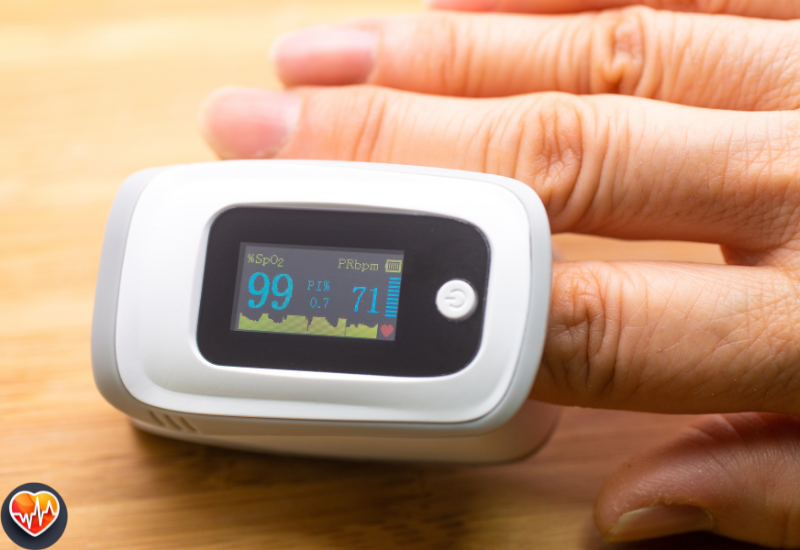
FDA Safety Communication
The FDA has issued a safety relating to pulse oximeters, highlighting the factors that can affect their accuracy. They recommend talking to your doctor if you’re concerned about your readings or if you have any symptoms of low blood oxygen levels, such as shortness of breath or chest pain.
When to See a Doctor
So you’ve got your pulse oximeter, and you’ve taken your readings. Great! But what if they’re not within normal ranges?
If your oxygen soak level is consistently below 95%, or if you’re experiencing symptoms like shortness of breath, dizziness, or chest pain, it’s important to see a doctor.
These could be signs of a condition that needs treatment, like a chronic lung condition or sleep apnea. In some cases, supplemental oxygen therapy might be necessary.
Factors Affecting Oxygen Saturation Levels
Several things can affect your oxygen saturation levels, including:
- Underlying health conditions: Conditions like asthma, COPD, or heart problems can make it harder for your body to get enough oxygen.
- Altitude: Oxygen levels in the air decrease at higher altitudes, which can lower your blood oxygen saturation.
- Carbon monoxide poisoning: This dangerous condition can fool your pulse oximeter into giving a falsely high reading, even though you’re not getting enough oxygen.
Pulse Oximeter Limitations
Remember, pulse oximeters aren’t foolproof. Here are a few things to keep in mind:
- Skin temperature: Cold fingers can affect accuracy.
- Skin pigmentation: In rare cases, darker skin tones may affect readings due to the way the pulse oximeter’s infrared light emitted interacts with melanin in the skin. The FDA has issued a safety communication acknowledging this issue and encouraging further research to improve pulse oximeter accuracy for all skin tones.
- Nail polish and fake nails: These can block the infrared light emitted by the pulse oximeter.
How Pulse Oximeters Work
Pulse oximeters work by shining two different colors of light (red and infrared) through your finger. The amount of light absorbed by your blood depends on how many oxygen-carrying hemoglobin molecules are present. By measuring this light absorption, the pulse oximeter can estimate your blood oxygen saturation level.
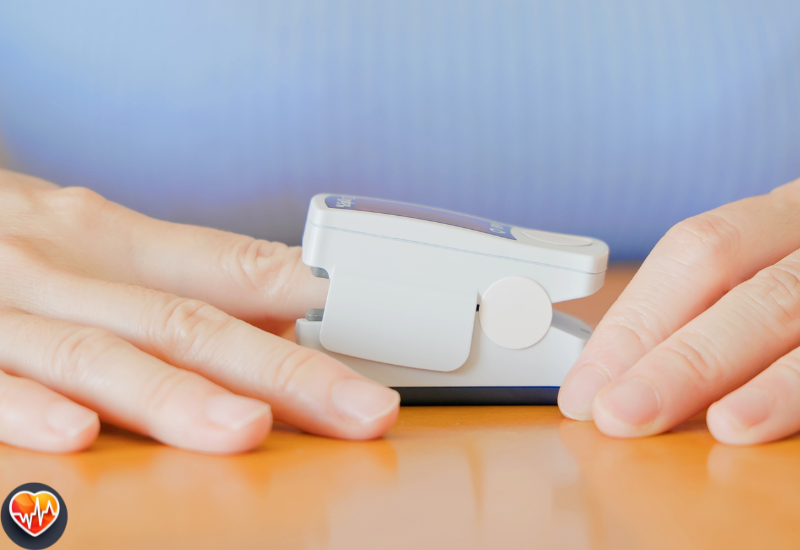
Remember: A pulse oximeter is a helpful tool, but it’s not a reserve for professional medical advice. If you’re concerned about your oxygen levels, talk to your doctor. They can help you determine the best course of action and recommend any necessary treatment, such as oxygen therapy.
Choosing the Right Pulse Oximeter
So you’re thinking about getting a pulse oximeter? Great idea! But before you head to the store, here are a few things to keep in mind.
Choosing a Pulse Oximeter
Pulse oximeters come in all shapes and sizes. Some are small and clip onto your finger (finger pulse oximeters), while others are bigger and handheld. The most important thing is to choose one that’s easy for you to use and understand, allowing you to easily monitor your blood oxygen levels.
Here are a few tips:
- Check the display: Make sure the screen is easy to read, even in low light.
- Look for features: Some pulse oximeters have alarms that go off if your oxygen saturation levels get too low. Others can even store your readings over time.
- Ask your doctor: They could help you choose a model that’s right for you, especially if you have a lung disease or other health state.
Things to Avoid
- Nail polish and artificial nails: These can block the light from the pulse oximeter, making it harder to get an accurate reading of your actual oxygen saturation.
- Moving around: Try to stay still while the pulse oximeter is working. Fidgeting can affect the results.
How Pulse Oximeters Work
Pulse oximeters glow red and infrared light through your finger. The amount of light that passes through tells the device how much oxygen is attached to the red blood cells in your blood.
This is because oxygen-rich blood absorbs more infrared light and lets more red light through. This is how the device calculates your oxygen saturation level.
Remember, a pulse oximeter is a tool to help you monitor your health. It’s not a substitute for professional medical advice.
If you have any concerns about your oxygen levels or your readings, or if you experience symptoms of not having enough oxygen, like shortness of breath, talk to your doctor.
A Note About Pulse Oximeter Accuracy:
You might see the phrase “pulse oximeter may” in some information about these devices. This is a way of saying that while pulse oximeters are helpful, they’re not perfect.
They can be affected by things like cold fingers, fingernail polish, or even certain medical conditions like lung cancer. It’s always best to talk to your doctor to get the most accurate information about your health.
Let me know if you’d like help drafting the conclusion.
Conclusion
Okay, there you have it! You’re now a pulse oximeter pro. You know what it is, why it’s important, how to use it, and what your readings mean. Pretty cool, right?
Remember, a pulse oximeter is a handy tool for keeping tabs on your health. It’s like having a little window into your body’s oxygen levels.
But it’s not a substitute for a doctor’s advice. If you’re worried about your readings or have any health concerns, always talk to your doctor.
They’re the experts and can give you the best advice for staying healthy and feeling your best!
So, go ahead and use your newfound knowledge to keep an eye on your oxygen levels. It’s a simple step that could make a big difference in your well-being.
Frequently Asked Questions
What is a normal pulse oximeter reading?
A normal pulse oximeter reading for oxygen saturation (SpO2) is usually 95% or higher. A normal pulse rate is generelly between 60 and 100 beats per minute.
Can I use a pulse oximeter if I have dark skin?
While pulse oximeters are generally accurate for most people, darker skin tones may sometimes affect readings due to how the infrared light interacts with melanin. However, advancements are being made to improve accuracy for all skin tones.
What should I do if my oxygen saturation level is low?
If your oxygen saturation level is consistently below 95%, or if you have symptoms like shortness of breath, dizziness, or chest pain, consult your doctor immediately.
Why might my pulse oximeter reading be inaccurate?
Several factors can affect pulse oximeter accuracy, including cold hands, nail polish, artificial nails, or movement. Additionally, certain medical conditions, like carbon monoxide poisoning, can interfere with readings.
Is a pulse oximeter a substitute for medical advice?
No, a pulse oximeter is a helpful tool for monitoring your health, but it’s not a substitute for professional medical advice. If you have any concerns about your oxygen levels or readings, always talk to your doctor.




